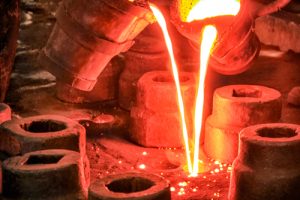 The Impact Of Heat Treating On Corrosion Resistance
The Impact Of Heat Treating On Corrosion Resistance
Heat treatment is an important process that enables metal parts to be used in many devices and equipment. Without it, these products wouldn’t function properly.
Corrosion Resistance
Heat treatment alters the microstructure of metals and alloys to achieve desired mechanical properties. These include strength, abrasion resistance, and durability. This process occurs by heating the metal beyond a critical temperature. It can be done in many ways, including annealing and precipitation hardening. Annealing stainless steel can soften the material, add ductility and impart improved corrosion resistance. It also relieves some of the stress that is associated with manufacturing, which reduces distortion. Precipitation hardening steels are a good choice for some applications that demand high strength and good corrosion resistance, such as hose clamp screws. They can be abrasion-resistant, too, though not as much as austenitic types.
Hardness
Hardness is the ability of a material to resist deformation caused by bending, scratching, or abrasion. This property is critical to a wide range of engineering applications. Hard materials such as ceramics, concrete, and certain metals, exhibit strong intermolecular forces that allow them to resist external stress without permanently changing their shape. This makes them ideal for a variety of applications. The hardness of a metal can be improved during heat treatment by controlling the temperature at which the alloy is heated, and how quickly it’s cooled down once the change has been completed. For example, carburizing is a process where a small amount of carbon is added to the surface of the alloy to increase its hardness and strength.
Durability
Durability is an important aspect of heat treating your metal components. It ensures that the piece will stand up to harsh environments and withstand daily wear and tear. One way that heat treats can increase durability is through the hardening of metal. This can be done at a surface level (called case hardening) or all the way through the metal (called traditional hardening).
Strength
When you heat treat metal, you’re changing its microstructure to alter some of the physical properties. Strength, which is the ability of a metal to resist external forces, is the most obvious effect. However, heat treating can also reduce toughness and introduce brittleness. This is why it’s important to understand the different types of heat treatments and how they affect your desired characteristics before deciding on one.
